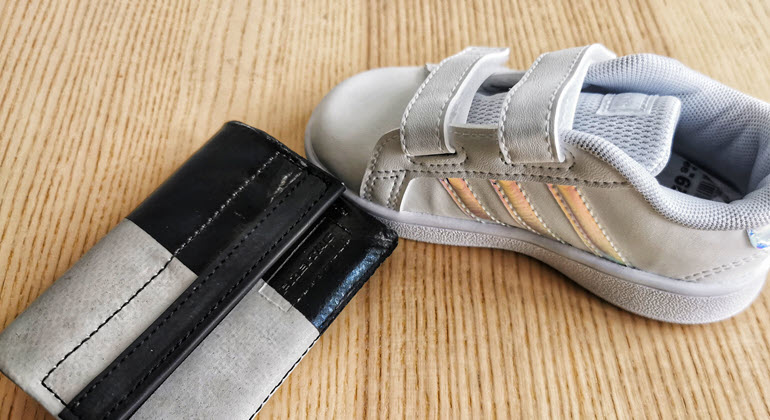Tests with socks and a floor mat
The engineer could not stop thinking about it – he wanted to know exactly how the balls were staying attached. Looking at them under the microscope, de Mestral discovered that tiny elastic hooks were the reason behind it. He saw potential in this for a new type of textile fastener. For days and months in his workshop, he worked meticulously to find the perfect solution. The result was a hook strap and a loop strap that interlocked. And so, the Velcro fastener was born. At home, de Mestral conducted initial tests with the help of his children by getting them to walk over a floor matt with socks on – both materials had been specially prepared.
His invention is protected by a patent
After years of researching and experimenting, de Mestral ensured that his invention could not be stolen from him. On 22 October 1951 at 7pm, he filed for patent protection for the Velcro fastener (CH295638A) with the Intellectual Property Office (today the IPI). The patent was granted in 1954 because the Velcro fastener was novel, innovative and industrially applicable. The engineer thereby obtained the exclusive right to use his invention for 20 years. In return, he disclosed how the fastener worked in the patent specification. This ‘deal with society’ is still one of the key elements of patent protection today.
The fastener was not his only invention, however. A hair roller that uses hook and loop technology (CH380891A), for example, is also to his credit. These rollers are still used by hairdressers nowadays.
De Mestral had to wait quite a while for commercial success. However, the tide turned on 4 July 1969. The Velcro fastener was part of the first moon landing – on the astronauts’ suits and other equipment. Omega’s legendary ‘moonwatch’ was attached to the suits by a Velcro strap. One of the first shoes to use a Velcro strap was by the brand PUMA. The Velcro company, founded by de Mestral, still exists today.






